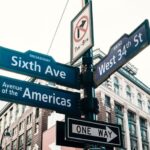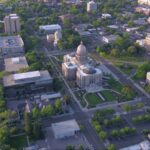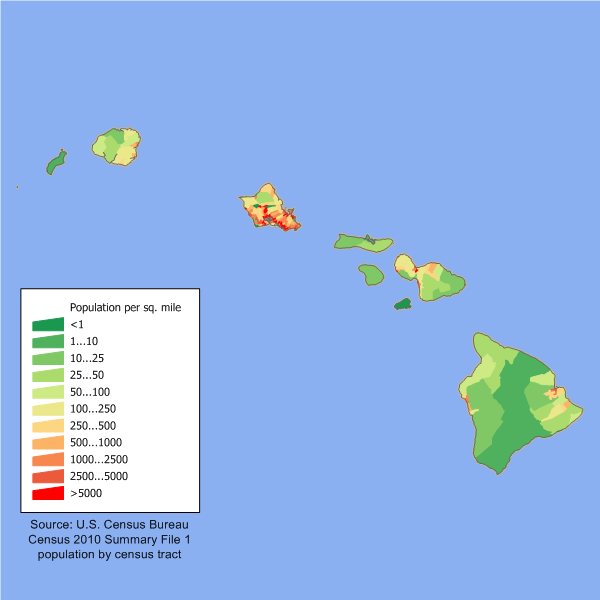
Hawaii, the “Aloha State,” evokes images of swaying palm trees, crystal-clear waters, and vibrant sunsets. But beyond its breathtaking beauty lies a diverse tapestry of urban and rural communities, each offering unique experiences. Today, we’ll embark on a journey through the 10 largest cities in Hawaii, uncovering their hidden gems and distinct charms.
1. Honolulu: The Jewel of Oahu
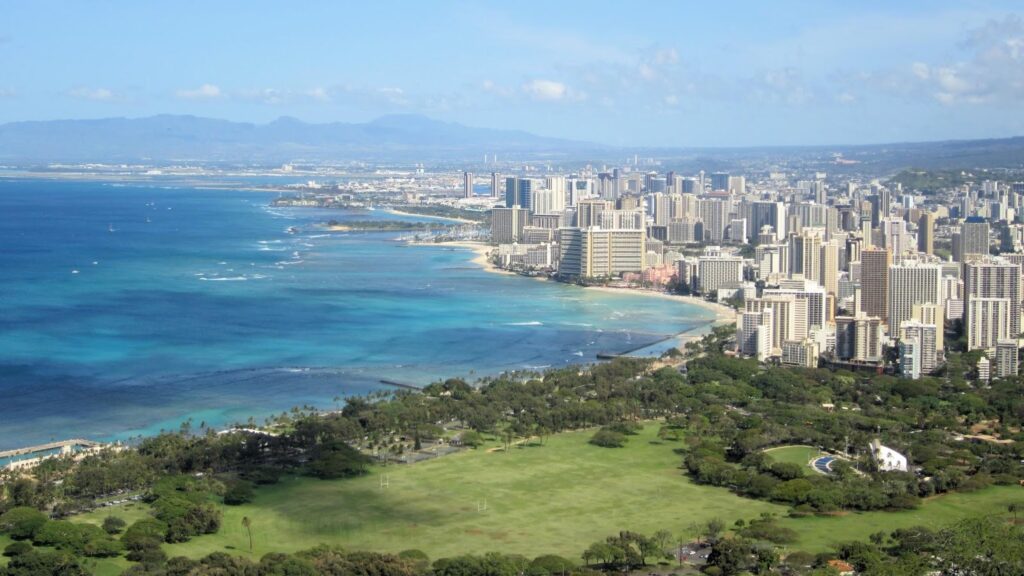
As the state capital and most populous city, Honolulu pulsates with life. Iconic Waikiki Beach is a magnet for surfers and sunbathers, while vibrant neighborhoods like Chinatown and Kakaako offer cultural immersion and artistic flair. Explore the historic Iolani Palace, wander through lush gardens at Foster Botanical Garden, or hike the majestic Diamond Head Crater for panoramic views.

Depending on what you’re looking for, there are different answers to the question about Honolulu’s population:
As of the 2020 U.S. Census:
- City of Honolulu: 350,964 people;
- Urban Honolulu Census-Designated Place (CDP): 802,459 people;
- Honolulu Metropolitan Statistical Area: 1,016,508 people.
More recent estimates:
- Some sources estimate the City of Honolulu population to be slightly higher in 2023, around 354,000;
- The Urban Honolulu CDP population is estimated to be closer to 808,000 in 2023.
Additional resources:
- U.S. Census Bureau: https://www.census.gov/quickfacts/fact/table/urbanhonolulucdphawaii/PST045223
2. East Honolulu: A Hidden Oasis
<alt=”East Honolulu”/>
Nestled on the southeastern coast of Oahu, East Honolulu promises a quieter pace. Sandy beaches like Kahala Beach Park and Waialae Beach Park beckon with calm turquoise waters, perfect for swimming and snorkeling. Explore Koko Head Crater for breathtaking vistas, indulge in local cuisine at Waialae Country Club, or discover hidden gems like Hanauma Bay Nature Preserve.
The population of East Honolulu depends on how you define it:
As a Census-Designated Place (CDP):
- In the 2020 U.S. Census, East Honolulu had a population of 47,132;
- Estimated 2024 population: Some sources project a slight increase to around 49,491 by 2024.
Resources:
- U.S. Census Bureau QuickFacts: https://www.census.gov/quickfacts/fact/table/easthonolulucdphawaii/PST045222
Remember, these are just estimates, and the actual population may vary depending on the exact boundaries used.
3. Pearl City: Where Nature Meets Urbanity
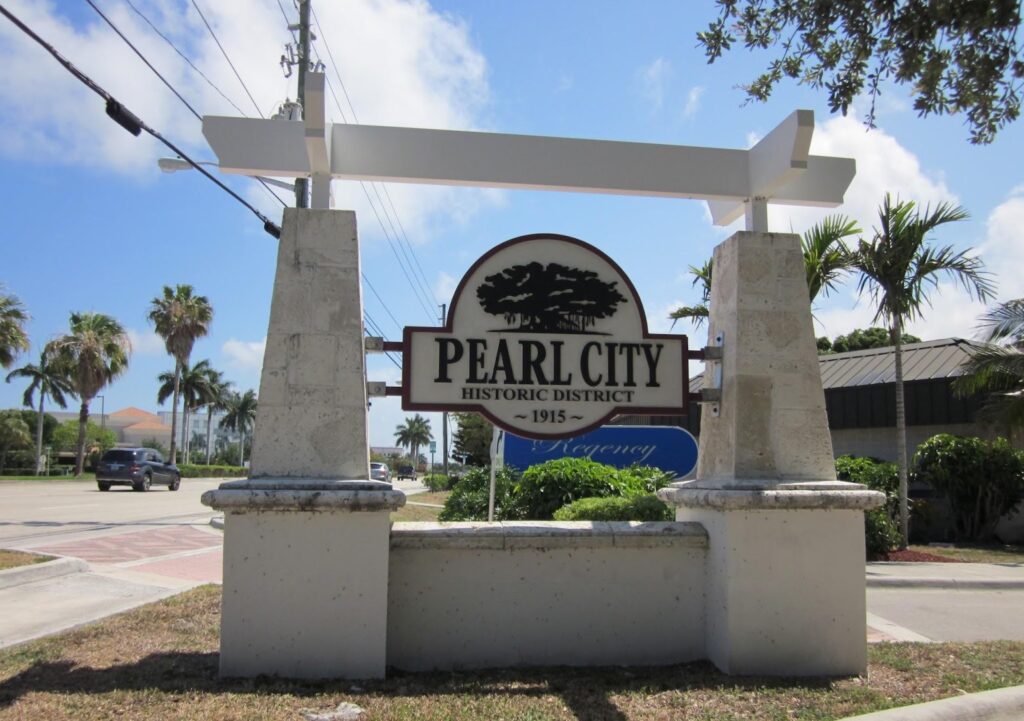
Located in central Oahu, Pearl City offers a blend of suburban charm and natural beauty. Visit Pearl Harbor National Memorial to honor fallen heroes, marvel at the Dole Plantation’s pineapple maze, or hike the Aiea Loop Trail for stunning mountain views. Immerse yourself in local culture at the Pearlridge Center West and discover hidden waterfalls off the beaten path.
Pearl City’s population depends on whether you’re referring to the city itself or the larger Census-Designated Place (CDP):
City of Pearl City:
- As of the 2020 U.S. Census, the City of Pearl City had a population of 45,159;
- Estimated 2024 population: According to World Population Review, the current population stands at 46,812, reflecting a slight increase of 3.66% since 2020.
Additional resources:
- U.S. Census Bureau QuickFacts for Pearl City CDP: https://www.census.gov/quickfacts/fact/table/pearlcitycdphawaii/PST045223
4. Waipahu: A Thriving Community
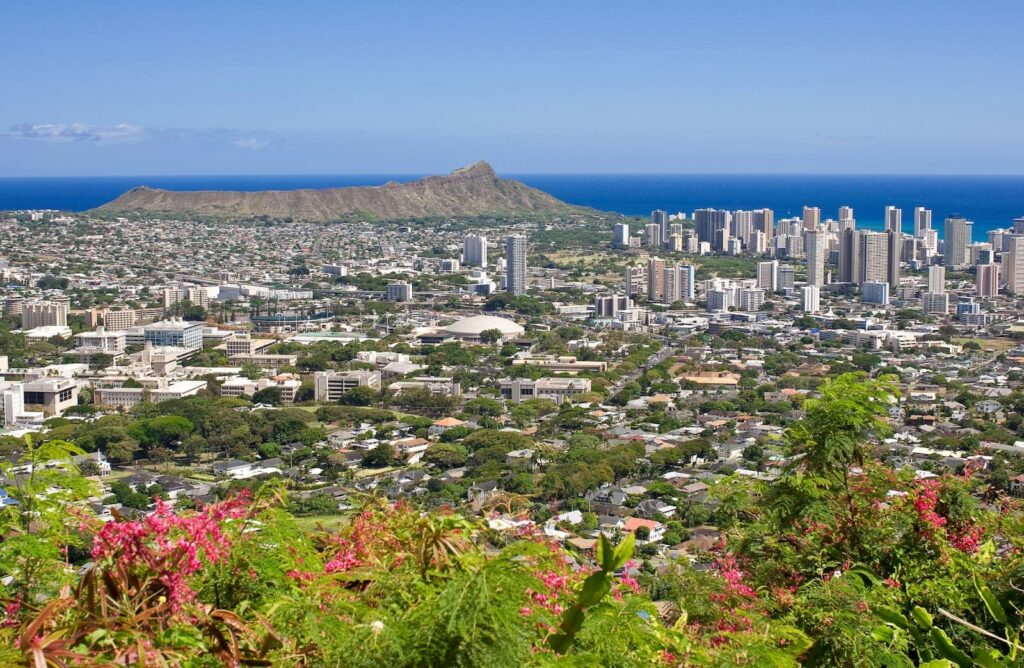
Situated in central Oahu, Waipahu boasts a vibrant community spirit. Hike the scenic Kunia Country Club Trail, indulge in local fare at Aloha Stadium Swap Meet & Marketplace, or explore the unique offerings of Waikele Premium Outlets. Experience authentic Hawaiian culture at the Waipahu Cultural Garden Park and celebrate local talent at the annual Waipahu Music Festival.
Waipahu’s population depends on how you define it:
Census-Designated Place (CDP):
- 2020 U.S. Census: 43,485 people were counted in the Waipahu CDP;
- Estimated 2024 population: Some sources project a slight decrease to around 39,873 by 2024. This figure may vary depending on the source and methodology used.
Resources:
- U.S. Census Bureau QuickFacts for Waipahu CDP: https://www.census.gov/quickfacts/fact/table/waipahucdphawaii/PST045223
5. Hilo: The Heart of Big Island
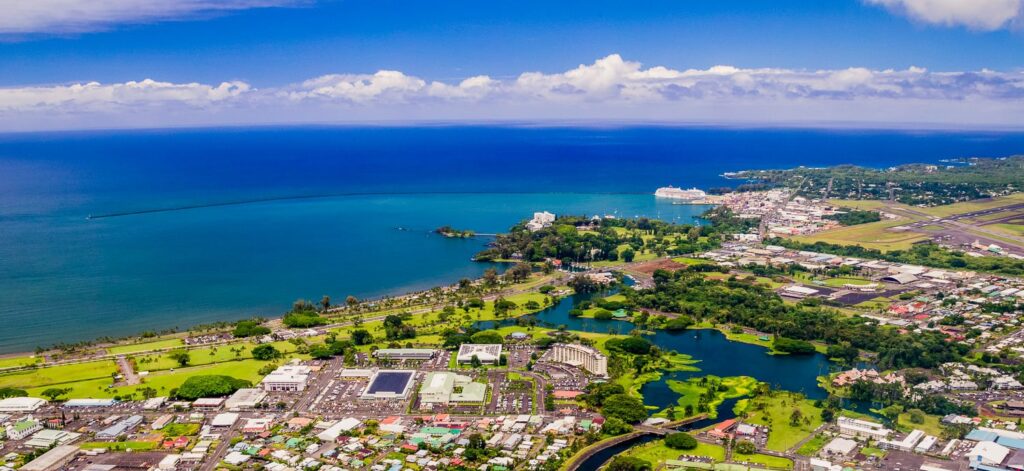
The largest city on the Big Island, Hilo exudes a relaxed charm. Immerse yourself in the volcanic wonders of Hawaii Volcanoes National Park, witness the mesmerising power of Rainbow Falls, or explore the fascinating Pacific Tsunami Museum. Discover fresh produce at Hilo Farmers Market, indulge in local brews at Hilo Brewing Company, and bask in the laid-back island vibes.
The population of Hilo depends on how you define it:
Hilo Census-Designated Place (CDP):
- 2020 U.S. Census: 44,186 people resided in the Hilo CDP;
- Estimated 2024 population: Sources like World Population Review estimate the current population at around 47,627, reflecting a 5.26% increase since 2020.
Additional Resources:
- U.S. Census Bureau QuickFacts for Hilo CDP: https://www.census.gov/quickfacts/fact/table/hilocdphawaii/PST045222
6. Kailua: Windward Oahu’s Paradise
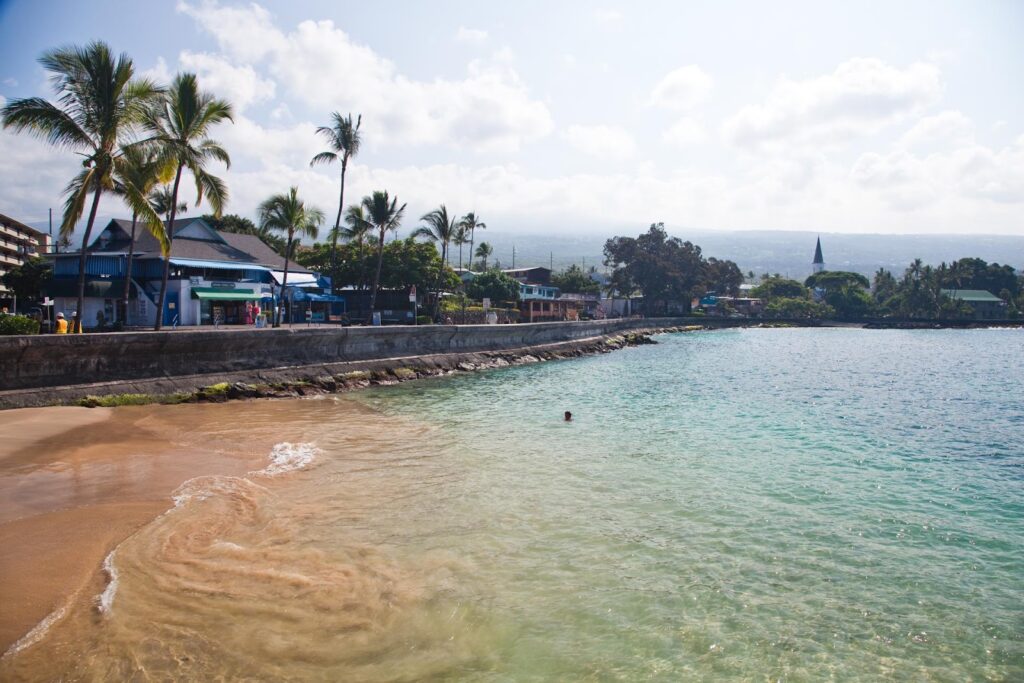
Nestled on the eastern coast of Oahu, Kailua is a haven for water enthusiasts. Catch waves at world-famous Lanikai Beach, kayak in the calm waters of Kailua Bay, or hike the Lanikai Pillbox Hike for panoramic views. Enjoy fresh seafood at Ono Seafood, delve into local history at Kailua Historical Society, and immerse yourself in the community spirit.
Kailua is a census-designated place (CDP) in Honolulu County, Hawaii, United States. The population was 38,661 at the 2020 census.
The population of Kailua is diverse, with a mix of Asian, Caucasian, and Native Hawaiian residents. The median household income in Kailua is $112,000, which is higher than the national average. The median home value in Kailua is $850,000.
7. Kaneohe: A Gateway to Nature
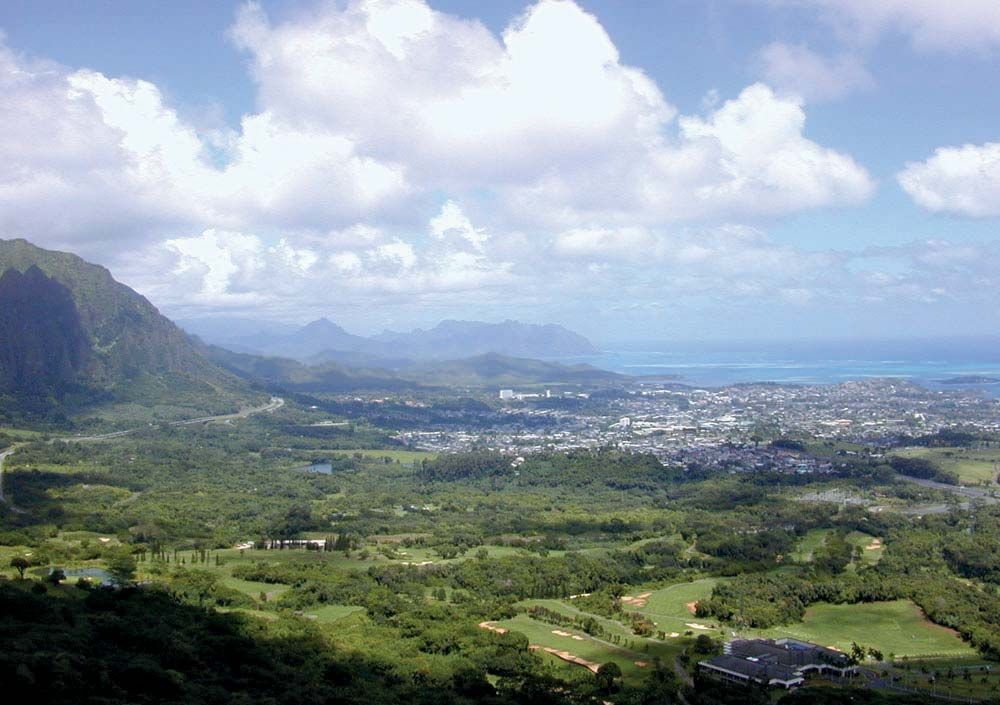
Located on the windward side of Oahu, Kaneohe boasts stunning natural beauty. Explore the lush Kaneohe Bay, home to Heeia Kea Boat Tours and pristine snorkeling spots. Visit the Byodo-In Temple, a replica of a 9th-century Japanese temple, or hike the challenging but rewarding Pali Lookout Trail. For a unique experience, take a helicopter tour over the dramatic Koolau Mountains.
The year 2000 painted a picture of Kaneohe as a bustling community of 34,970 residents, spread across 10,976 households and 8,682 families. With a density of 5,320 people per square mile, Kaneohe buzzed with life. Over 11,472 housing units provided shelter for its diverse population.
While 20.49% identified as White, Kaneohe’s true beauty lay in its multicultural makeup. Nearly 38.5% were Asian, followed by 11.44% Pacific Islander, and a significant portion identifying as mixed-race (27.90%). The Hispanic and Latino community added another layer of vibrancy, making up 7.21% of the population.
8. Kahului: The Hub of Maui
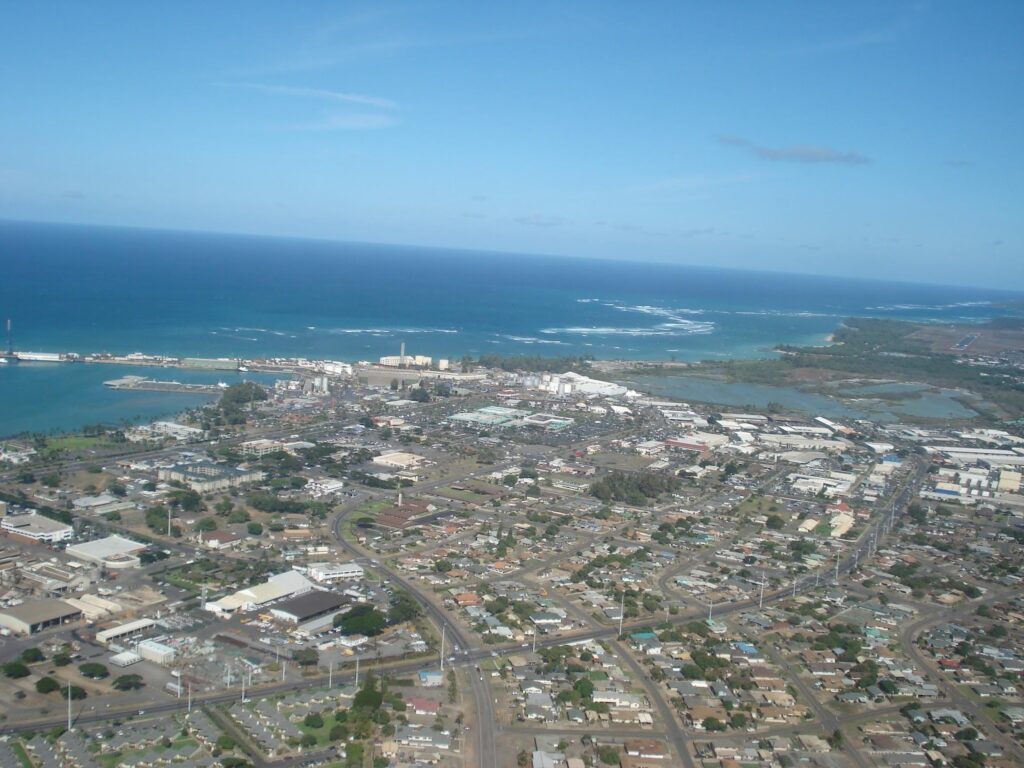
The main urban center on Maui, Kahului serves as a gateway to the island’s diverse landscapes. Hike the scenic Iao Valley, home to ancient Hawaiian sites and lush rainforests. Visit the Maui Ocean Center to discover marine life, indulge in fresh seafood at the Kahului Harbor, or explore the vibrant Maui Swap Meet & Marketplace.
Here’s a summary of Kahului’s population information:
- Estimated 2024 population: 27,233 (World Population Review);
- 2020 Census population: 29,993 (U.S. Census Bureau);
- Population trend: Decreasing, with an estimated -9.2% decline since 2020
For more detailed information and official data, you can refer to these resources: U.S. Census Bureau QuickFacts for Kahului CDP: https://www.census.gov/quickfacts/fact/table/kahuluicdphawaii/PST045223
9. Mililani: A Modern Oasis
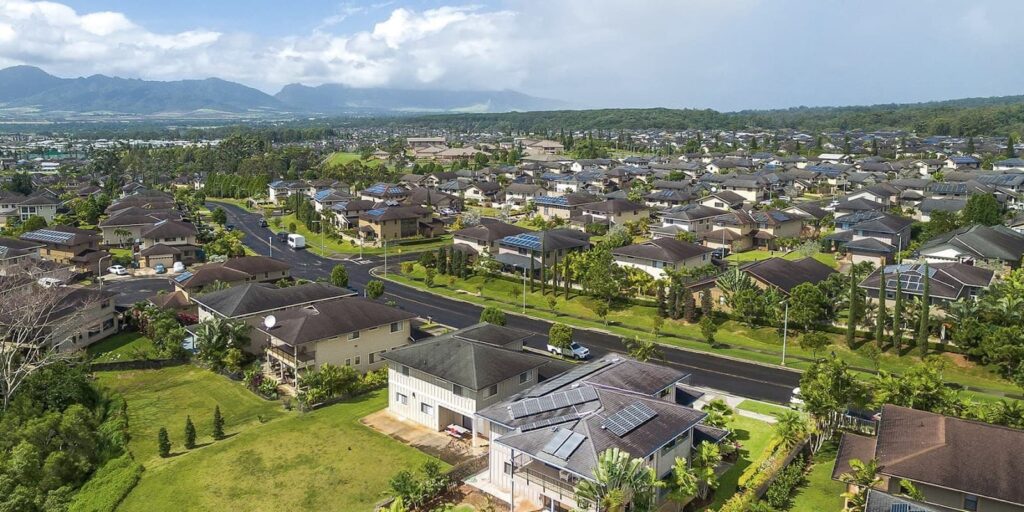
Nestled in central Oahu, Mililani is a planned community offering a suburban lifestyle. Explore the lush greenery of Mililani Town Center, indulge in retail therapy at the Mililani Shopping Center, or hike the scenic Waimea Valley Trail. Immerse yourself in local culture at the Mililani Cultural Center and enjoy family-friendly activities at Mililani Town Park.
Mililani’s population isn’t a single figure because it consists of two separate census-designated places (CDPs): Mililani Town and Mililani Mauka. Each one has its own population data from the 2020 U.S. Census:
- Mililani Town: 28,121 residents;
- Mililani Mauka: 21,075 residents.
Therefore, the combined population of Mililani as of 2020 is 49,196.
Additional Resources:
- U.S. Census Bureau QuickFacts for Mililani Town CDP: https://www.census.gov/quickfacts/fact/table/mililanitowncdphawaii/PST045222;
- U.S. Census Bureau QuickFacts for Mililani Mauka CDP: https://www.census.gov/quickfacts/fact/table/mililanimaukacdphawaii/PST045222
10. Ewa Beach: Oahu’s Newest City
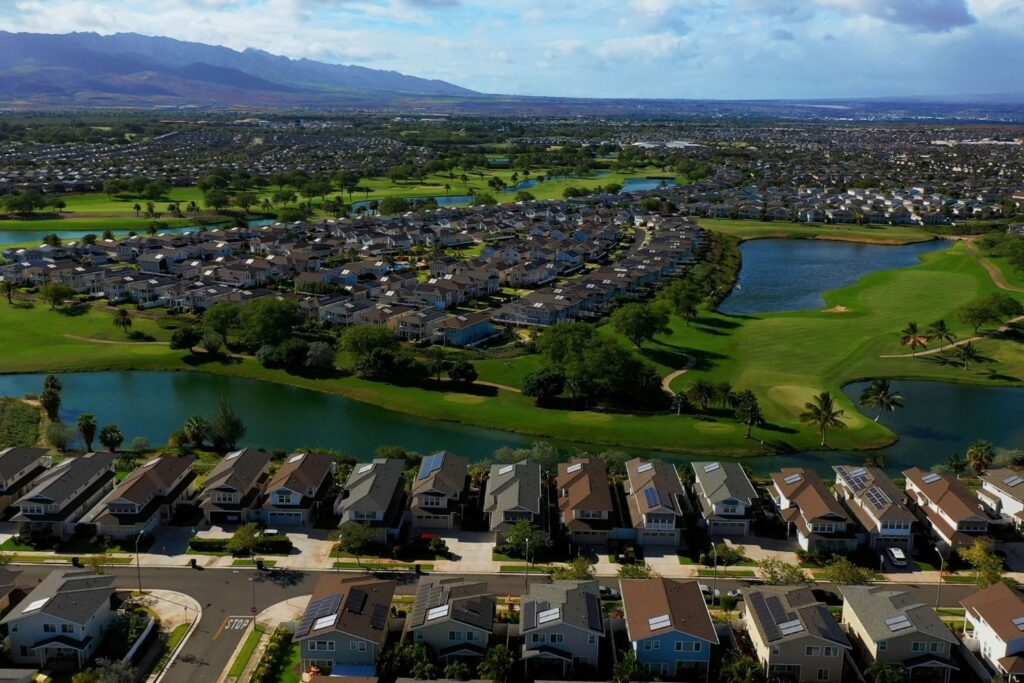
Located on the southwest coast of Oahu, Ewa Beach is a rapidly developing city. Relax on the sandy shores of Ewa Beach Park, hike the scenic Kaʻiwi Shoreline Trail, or enjoy water activities at the Ewa Marina. Discover local talent at the Ewa Beach Cultural Festival and celebrate community spirit at the annual Ewa Beach Summer Fest.
The population of Ewa Beach depends on whether you’re referring to the city itself or the larger Census-Designated Place (CDP):
City of Ewa Beach:
- As of the 2020 U.S. Census, the City of Ewa Beach had a population of 13,803;
- Estimated 2024 population: Some sources, including World Population Review, project the current population to be around 15,167. This reflects an increase of approximately 9.88% since 2020.
Additional Resources:
- U.S. Census Bureau QuickFacts for Ewa Beach CDP: https://www.census.gov/quickfacts/fact/table/ewabeachcdphawaii/PST045223
Summarize
From the vibrant pulse of Honolulu to the laid-back charm of Ewa Beach, each of Hawaii’s largest cities offers a unique experience waiting to be discovered. Whether you crave bustling city life, serene natural beauty, or a blend of both, there’s a perfect Hawaiian haven for you.
Last modified: February 28, 2024
